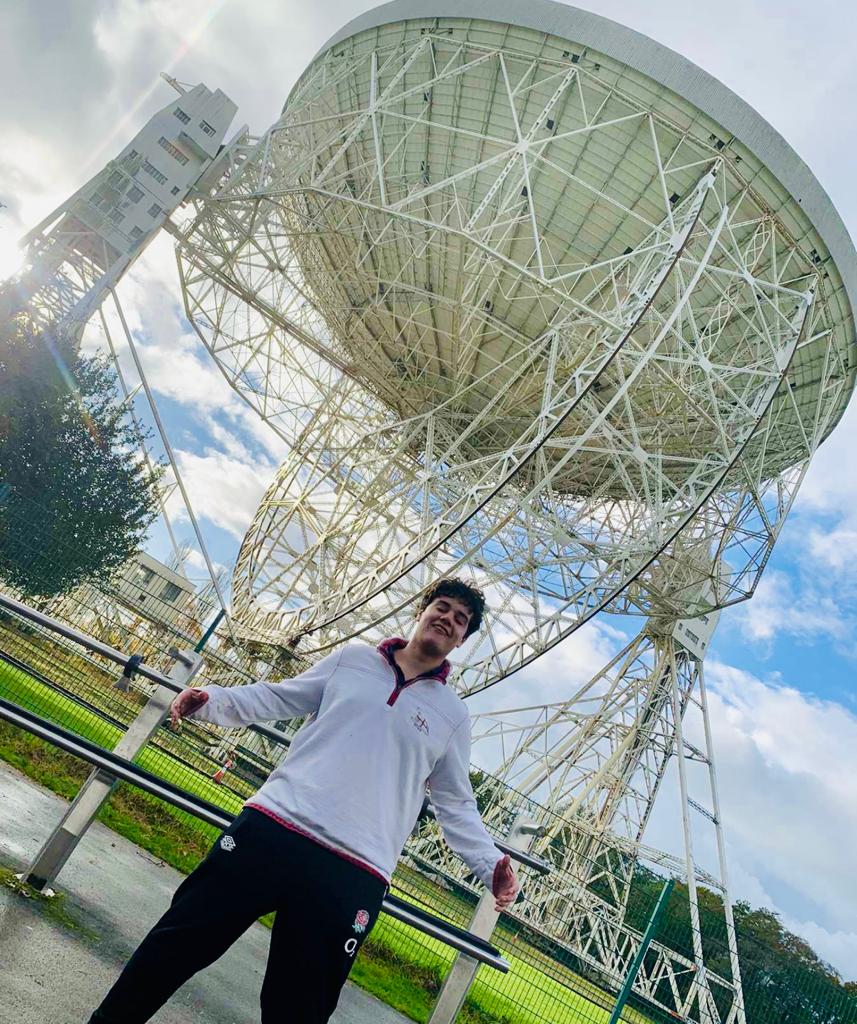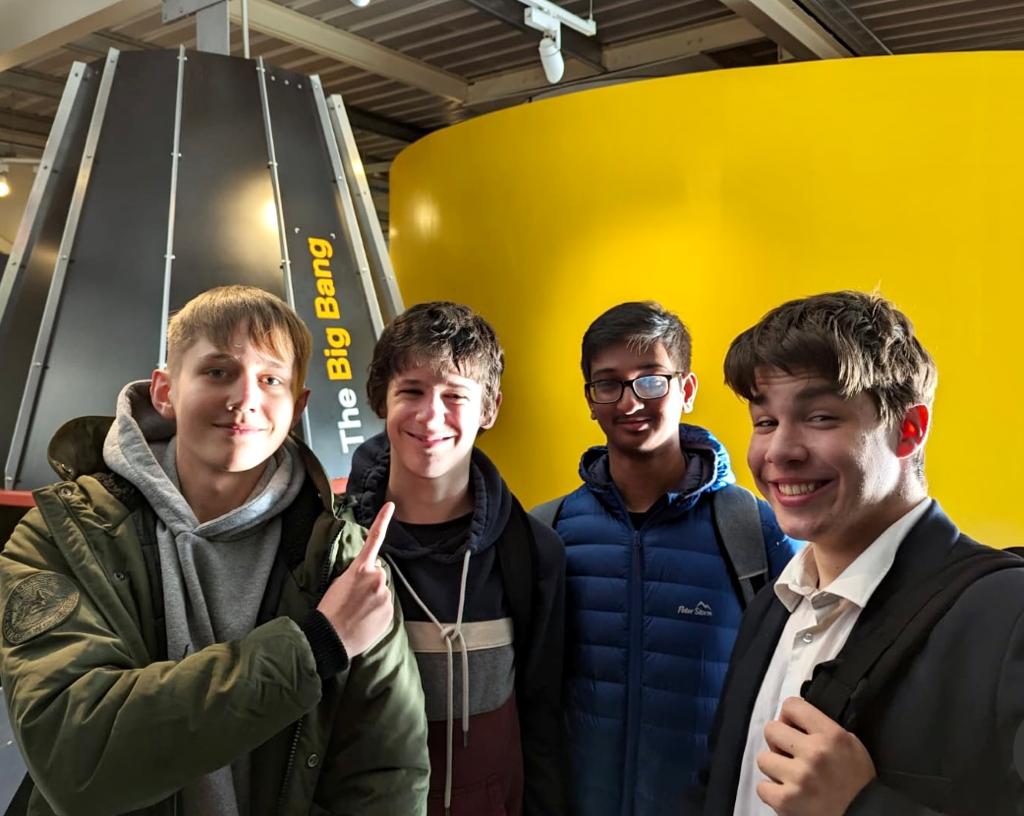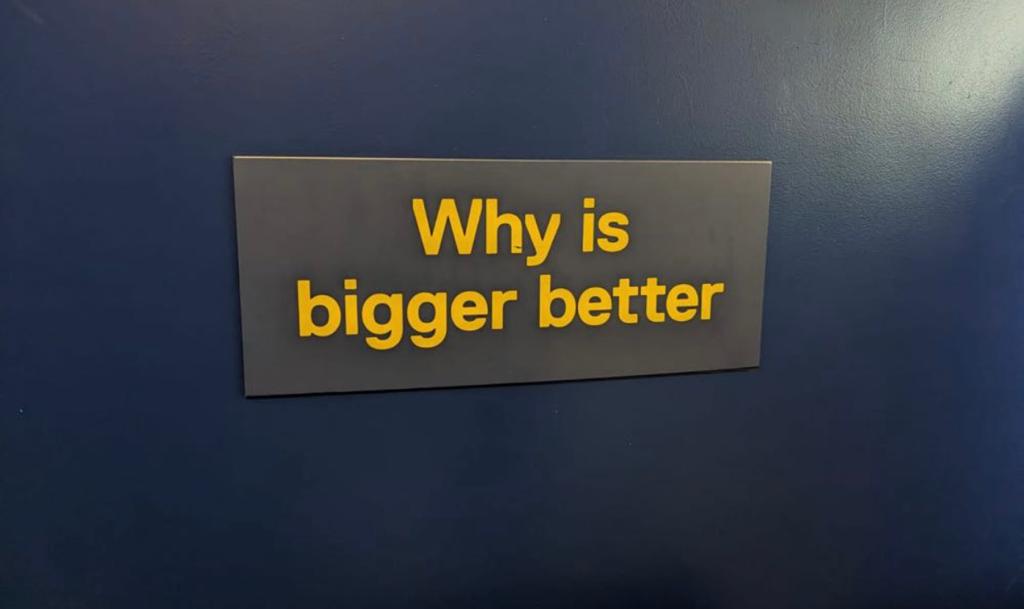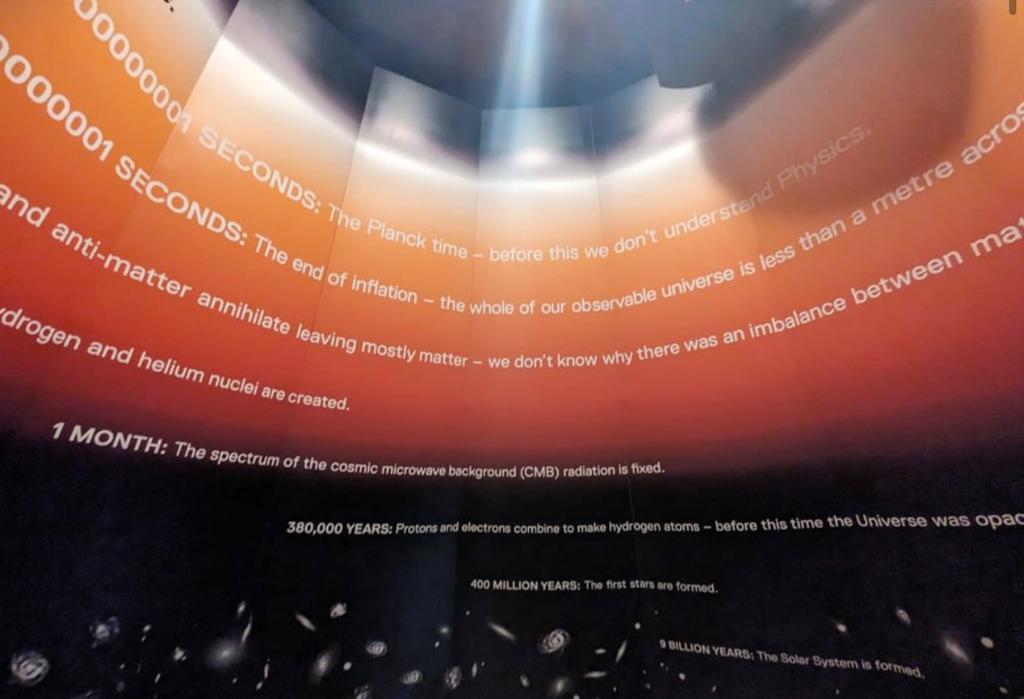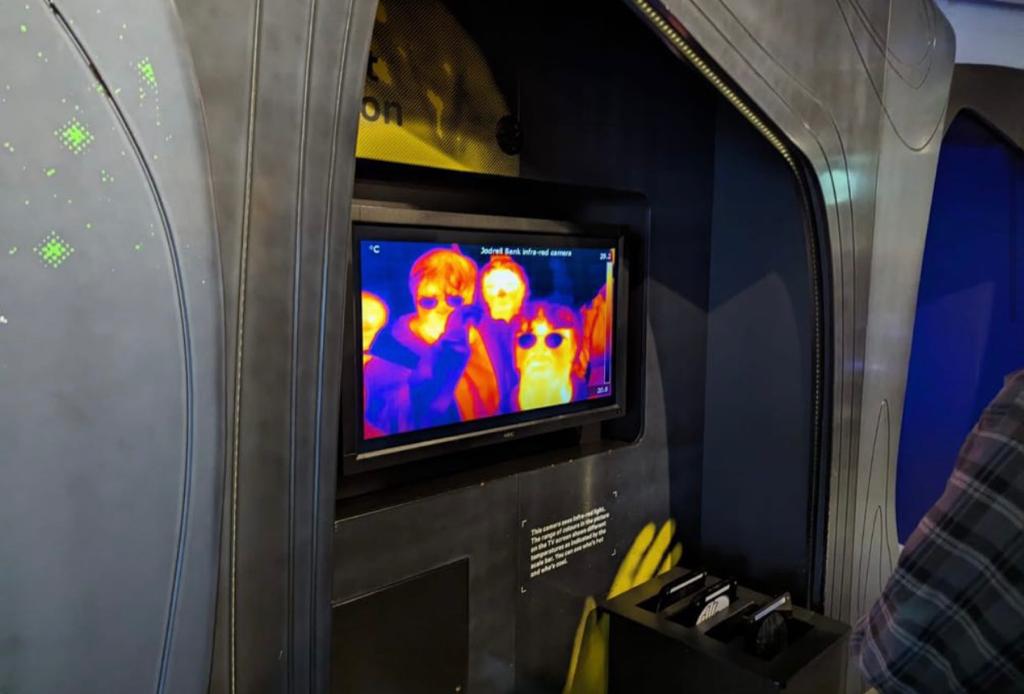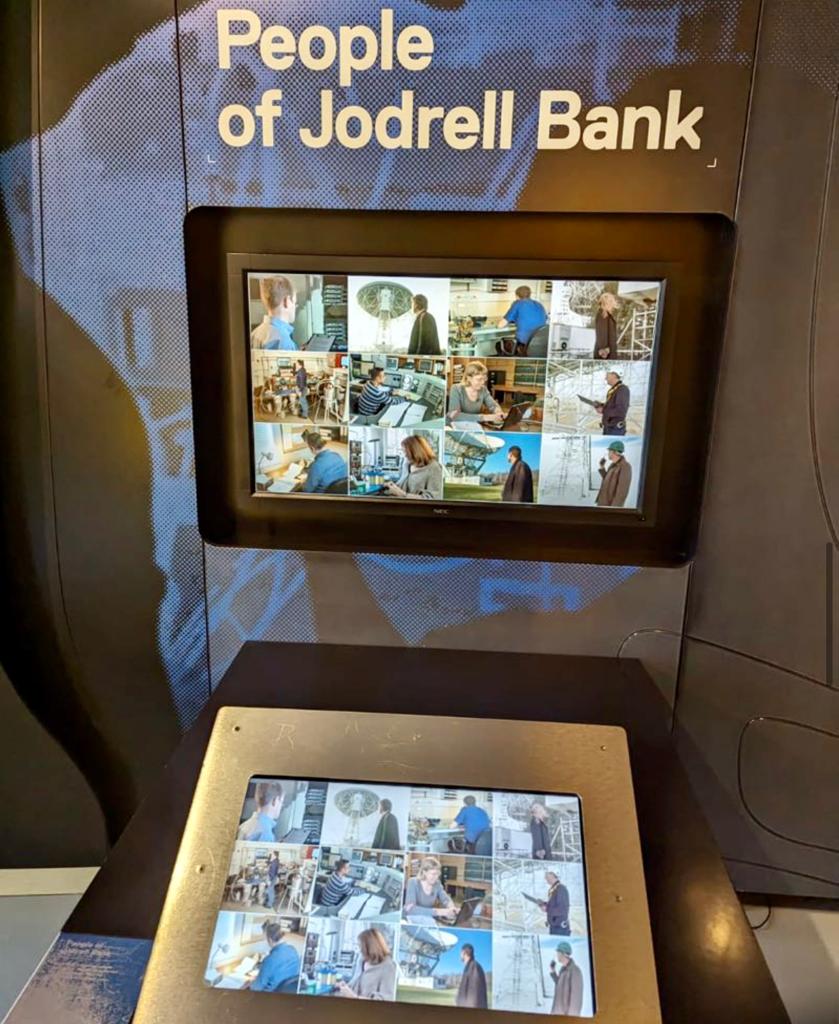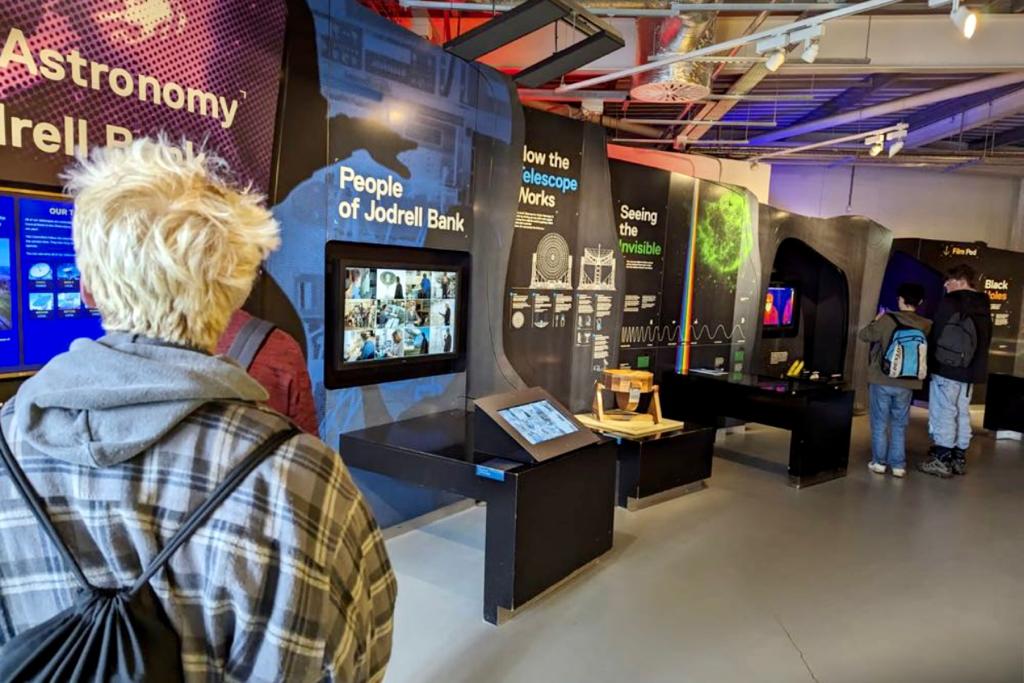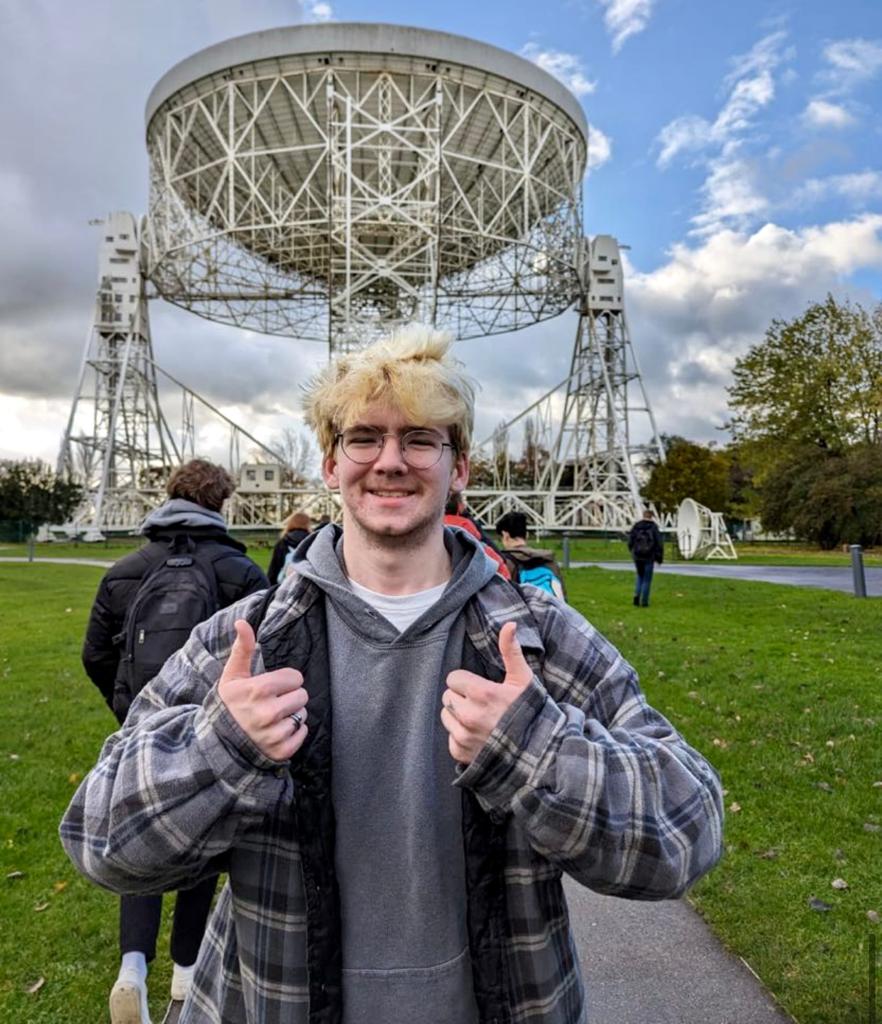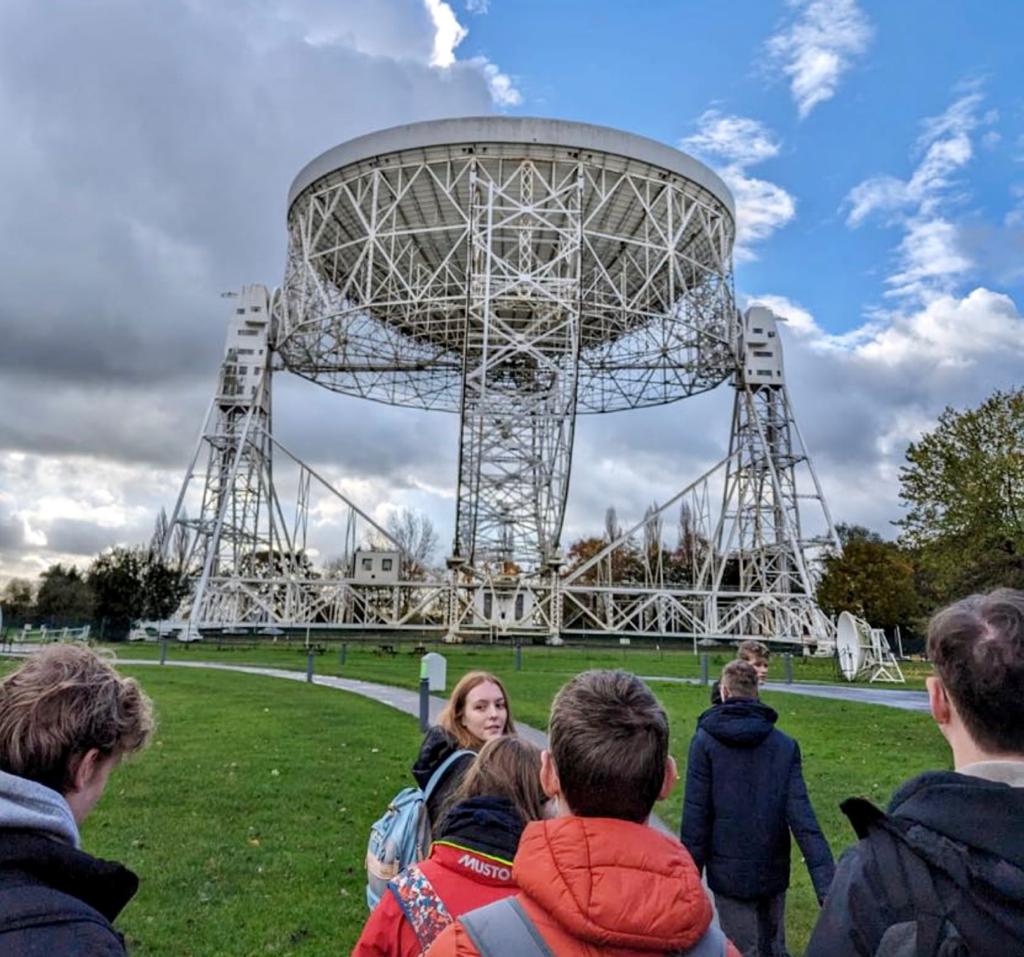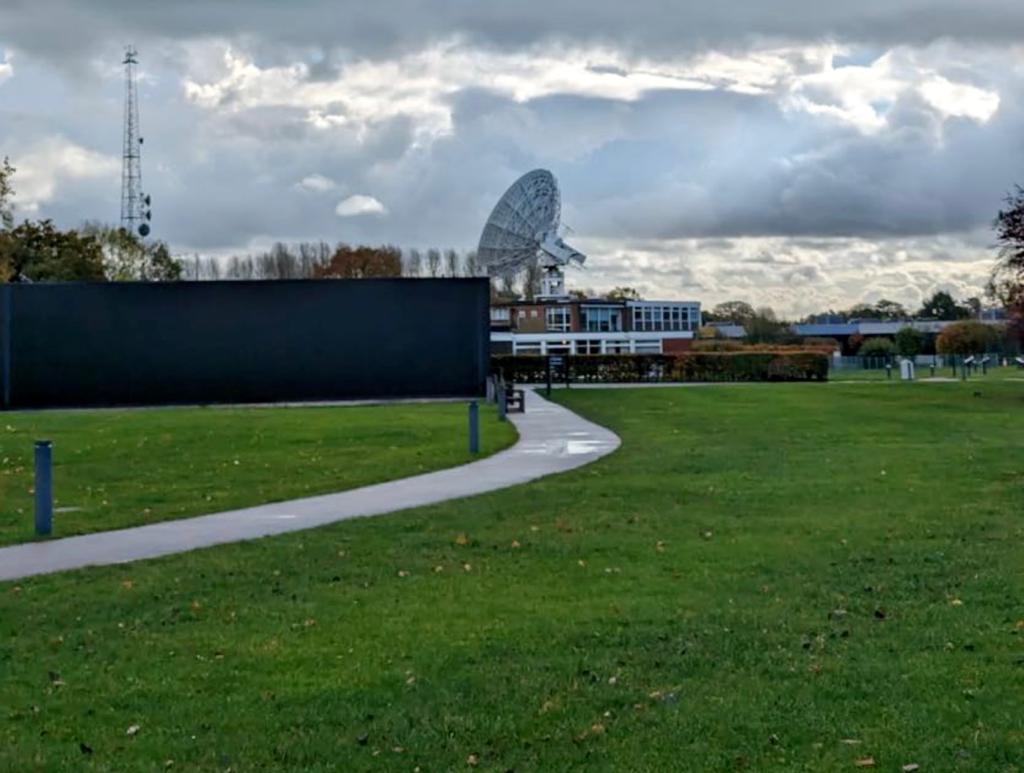A school trip that's out of this world
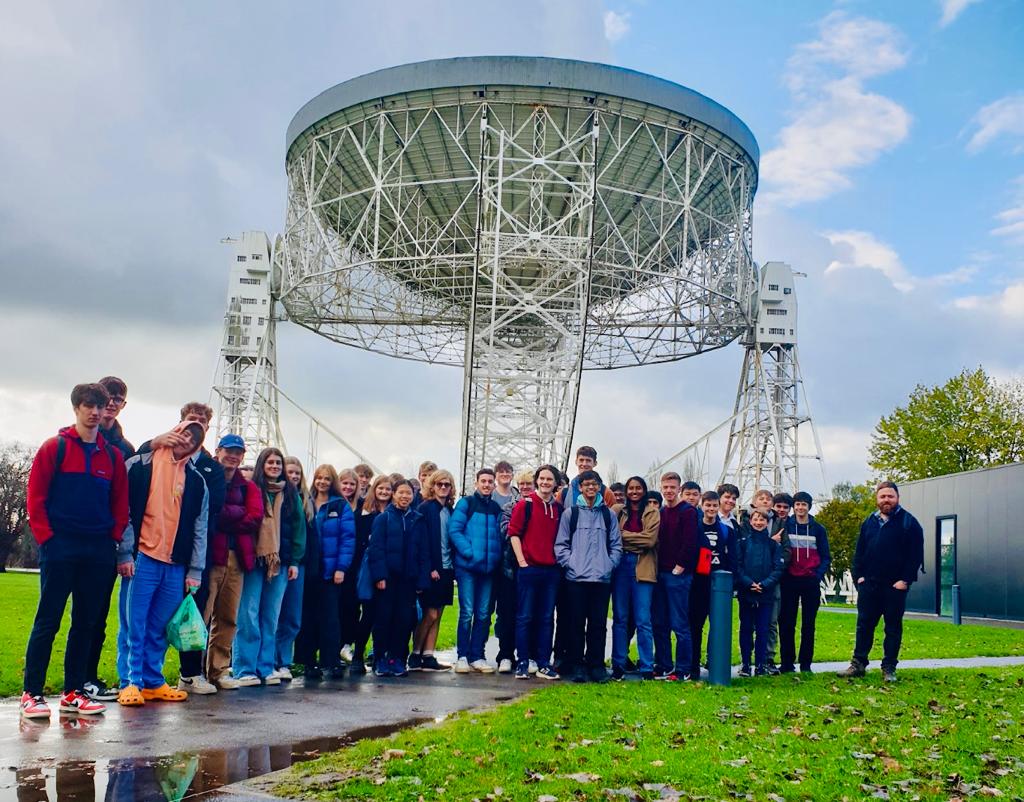
Budding astrophysicist MONTY BLEIKER reports on a fascinating tour of Cheshire's Jodrell Bank, one of the world's leading radio astronomy observatories
A-LEVEL physics and Year 11 astronomy students visited the observatory in Jodrell Bank, where the site consists of four main telescopes, with the main radio telescope being the biggest at 76 metres in diameter.
Our trip was split up into blocks, with different activities set for different times. First of all, we came to a newly built building called the First Light Pavilion that contained lecture rooms, investigative activity rooms and a space dome.
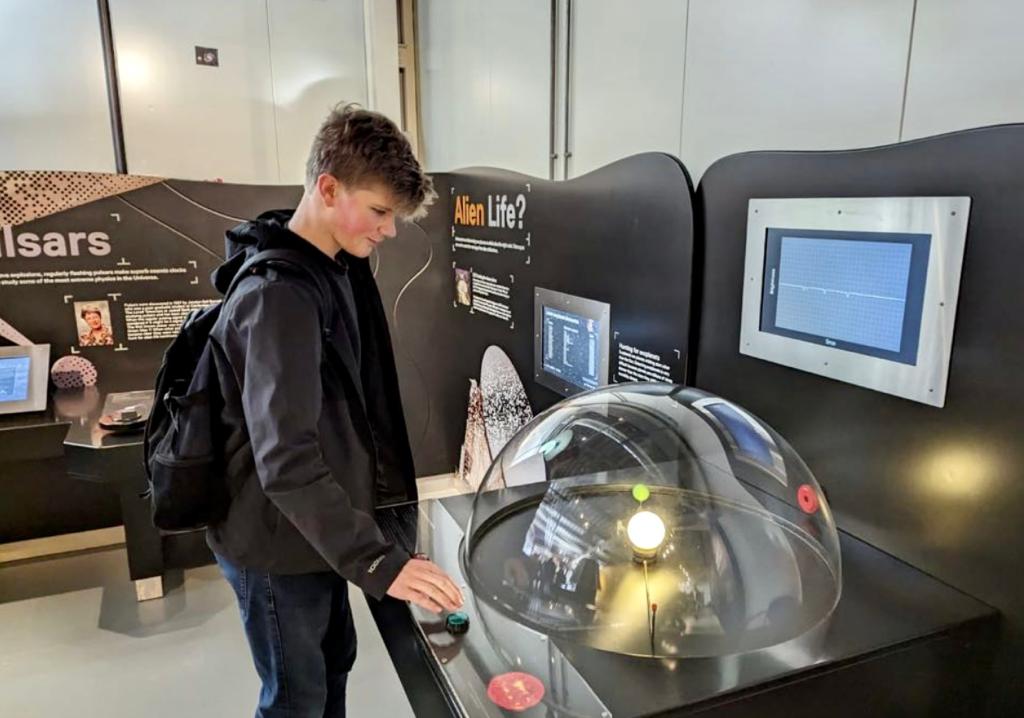
Our first part of the tour led us to a classroom, where we were briefly told about several famous telescopes, and the differences in what you see depending on which part of the electromagnetic spectrum you are observing. It was then when we started investigating the rotational velocity of galaxies, using equations, and substituting values to calculate the mass of a galaxy.
We then went to a room with a more hands-on approach, where we were able to learn about the history of the site, with different activities showing how different discoveries have incorporated themselves into everyday life, like radar and detecting foreign bodies at sea like U-boats, and how viewing from different wavelengths of light can completely alter your perception of the world around you, like infrared which allowed you to pick up heat signatures.
Our next activity was watching a short film on the history of the universe in a space dome, which really messed with our heads, intellectually and physically with all the 3D effects! The film talked about how the universe came to be from the Big Bang, and how atoms and molecules came to be from even simpler structures, and how life on Earth eventually came to be from a nebula of gas in space.
We then had something to eat and were then completely free to walk about the site. Things that we went to see involved the Space Pavilion, which had a moveable model of the Lovell telescope, an infrared camera, a simulation of the sound of the Big Bang, and many other interactive activities. There was also a pair of dishes called the Whispering Mirrors, which were set up in a way that the smallest sound on one end could be received extremely clearly on the other, even though they were separated by about 25 metres.
There was also a gift shop that included several space-related products. This experience was amazing, and it was great that different year groups could interact with each other to investigate astronomy-based challenges. The observatory will always be a staple in our minds that we won’t soon forget.
